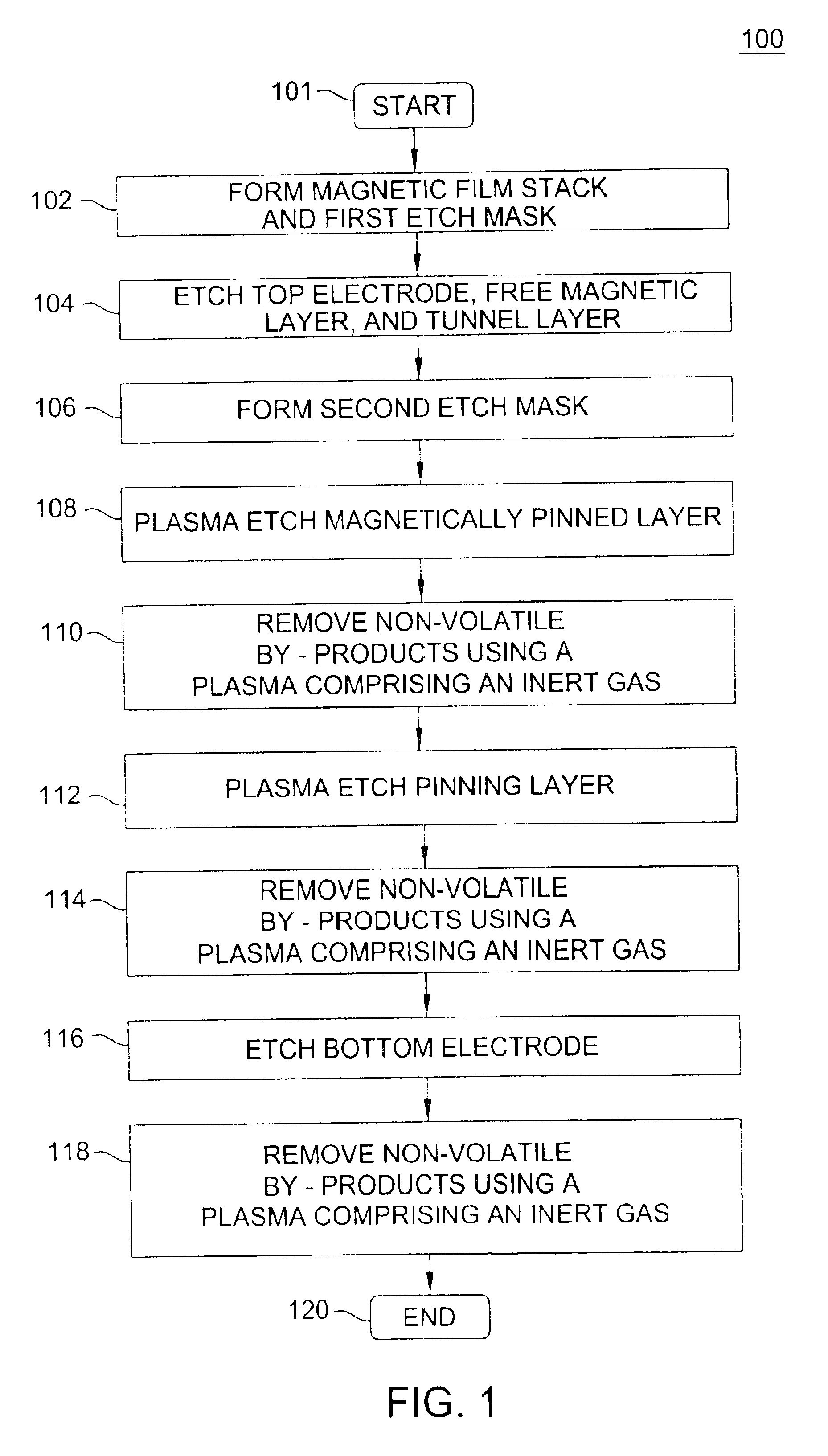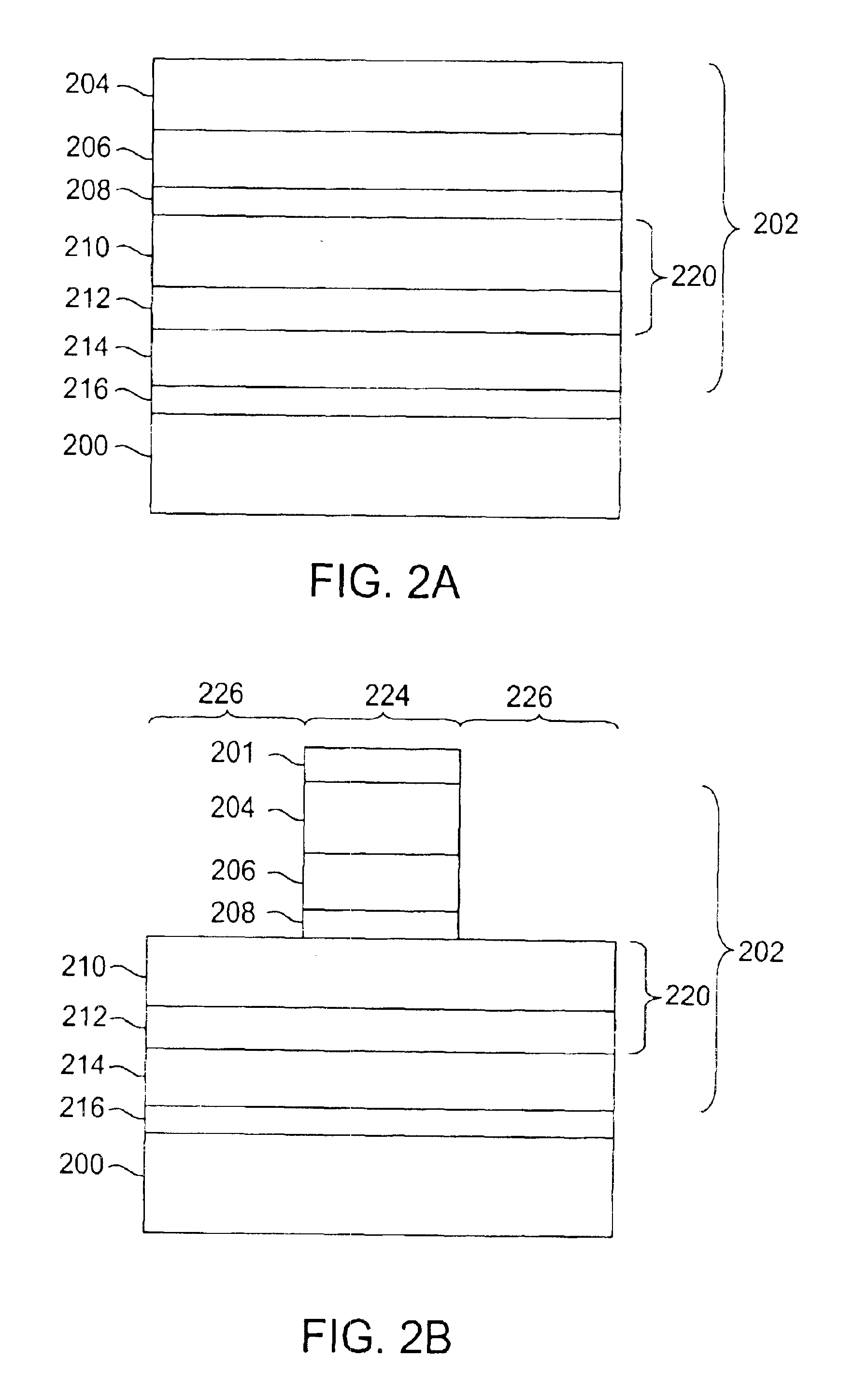Method of fabricating a magneto-resistive random access memory (MRAM) device
a random access memory and magnetoresistive technology, applied in the field of fabricating devices, can solve the problems of difficult to remove metal-containing residues, easy oxidation or damage, and short circuits within the mram film stack,
- Summary
- Abstract
- Description
- Claims
- Application Information
AI Technical Summary
Benefits of technology
Problems solved by technology
Method used
Image
Examples
Embodiment Construction
The present invention is a method of etching a multi-layer magnetic stack (e.g., layers of cobalt-iron alloy (CoFe), ruthenium (Ru), platinum-manganese alloy (PtMn), and the like) of a magneto-resistive random access memory (MRAM) device. Each layer of the multi-layer magnetic stack is etched using a process sequence including a plasma etch step followed by a plasma treatment step. The plasma treatment step uses a plasma comprising an inert gas to remove residues formed during the plasma etch step.
FIG. 1 depicts a flow diagram of one embodiment of the inventive method for etching the multi-layer magnetic stack of a magneto-resistive random access memory (MRAM) device as sequence 100. The sequence 100 includes the processes that are performed upon a magneto-resistive random access memory (MRAM) film stack during fabrication of such MRAM device.
FIGS. 2A-2I depict a series of schematic, cross-sectional views of a substrate comprising a MRAM device being formed using the sequence 100. T...
PUM
| Property | Measurement | Unit |
|---|---|---|
| chamber pressure | aaaaa | aaaaa |
| pressure | aaaaa | aaaaa |
| pressure | aaaaa | aaaaa |
Abstract
Description
Claims
Application Information
 Login to View More
Login to View More - R&D
- Intellectual Property
- Life Sciences
- Materials
- Tech Scout
- Unparalleled Data Quality
- Higher Quality Content
- 60% Fewer Hallucinations
Browse by: Latest US Patents, China's latest patents, Technical Efficacy Thesaurus, Application Domain, Technology Topic, Popular Technical Reports.
© 2025 PatSnap. All rights reserved.Legal|Privacy policy|Modern Slavery Act Transparency Statement|Sitemap|About US| Contact US: help@patsnap.com



